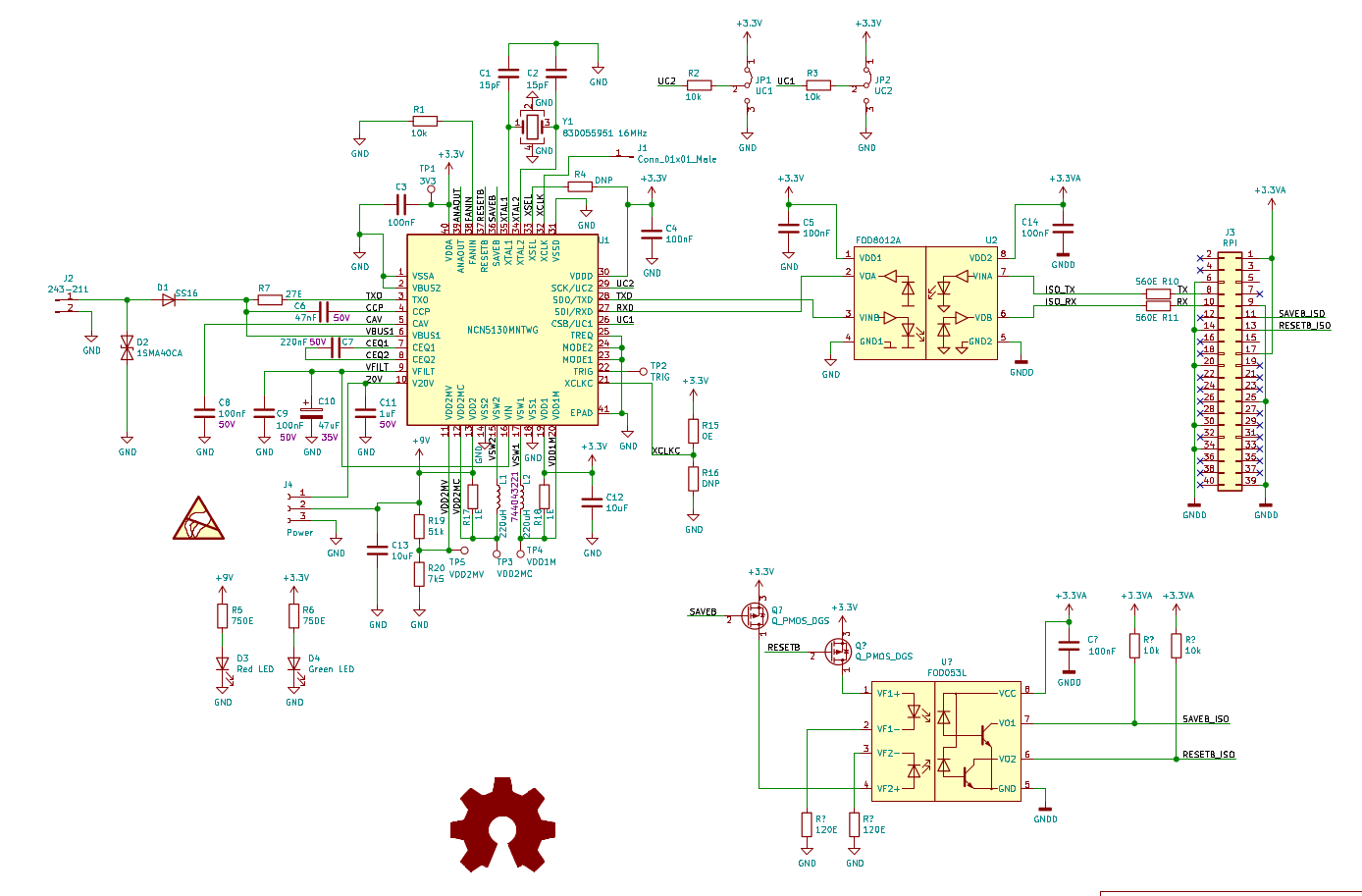A new schematic is available under ncn5100rh-2. This is the new design which will contain functional isolation between the KNX transceiver and the Raspberry Pi. The design is available on the GitLab project page.

I will be working on the layout for this design in the coming weeks.
 Tijl Schepens
Tijl Schepens
Discussions
Become a Hackaday.io Member
Create an account to leave a comment. Already have an account? Log In.
Definitely adding a like and a follow. However, is there a reason why you're using the opto-isolators instead of something like an ISO7741 to handle both UART and SAVEB & RESETB?
Are you sure? yes | no
Thank you for your interest in the project! :-)
I haven't worked with digital isolators in the past and forgot they existed when drawing the schematic tbh. It's a very good suggestion and I will look into it.
On first sight they consume quite a bit, but so does the digital isolator I am using. The cost of those digital isolators might be lower than buying many opto-couplers.
Are you sure? yes | no
Yes. It may also be worth considering (in context of the isolation) using the SPI (being synchronous protocol) instead of the UART for signal integrity?
Related, you may want to check out a DC-DC converter integrated isolator like the ADP1032 to provide isolated rail from the Pi's 5V.
Are you sure? yes | no
Using the SPI would indeed be much better for signal integrity and even speed. But the problem is that all KNX software is written using the UART of these transceivers... At the moment I don't have the time to start adjusting KNXD to use SPI etc...
Do you mean supplying the Pi's 5V from the KNX bus? Connecting a DC-DC converter directly to the bus is not allowed. And the transceiver cannot provide enough current to supply the Pi. Doing that would be rather difficult.
Are you sure? yes | no
No, vice versa. In fact, I don't see where in your schematic the isolated(*) +3.3V for the NCN5130 is coming from. You could use the 5V Pi to provide both your isolated +9V and +3.3V with the ADP1032 using the flyback output and the buck output (respectively).
(*) I'm defining the KNX side of the hat as the "isolated" side.
EDIT: I probably a little confused on the supply voltage. Is it the 20V or the 9V?
Are you sure? yes | no
The 3.3V and 9V are coming from the two DC-DC converters integrated in the NCN5130. At the bottom of the IC in the schematic, you can see the inductors used for the converters.
Are you sure? yes | no